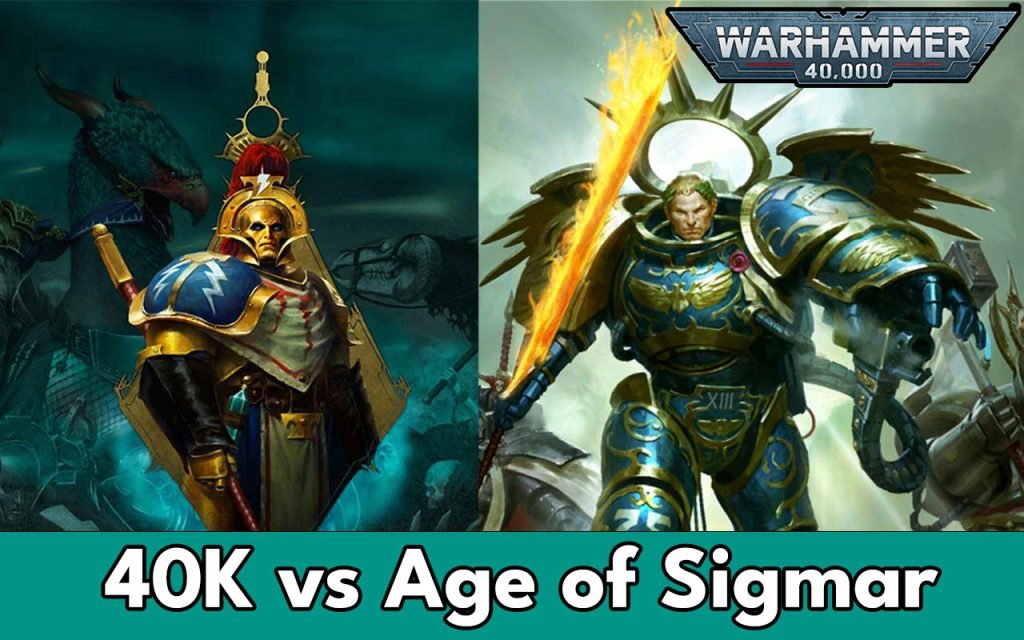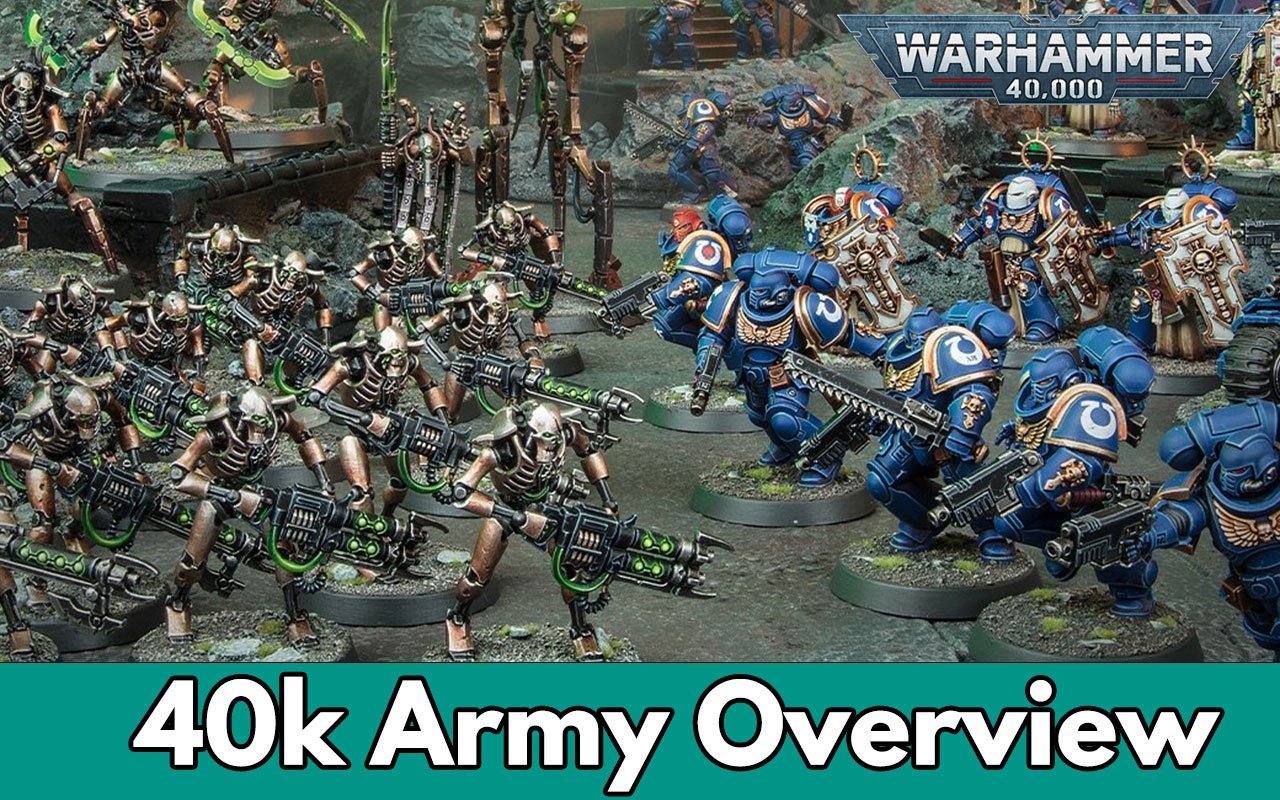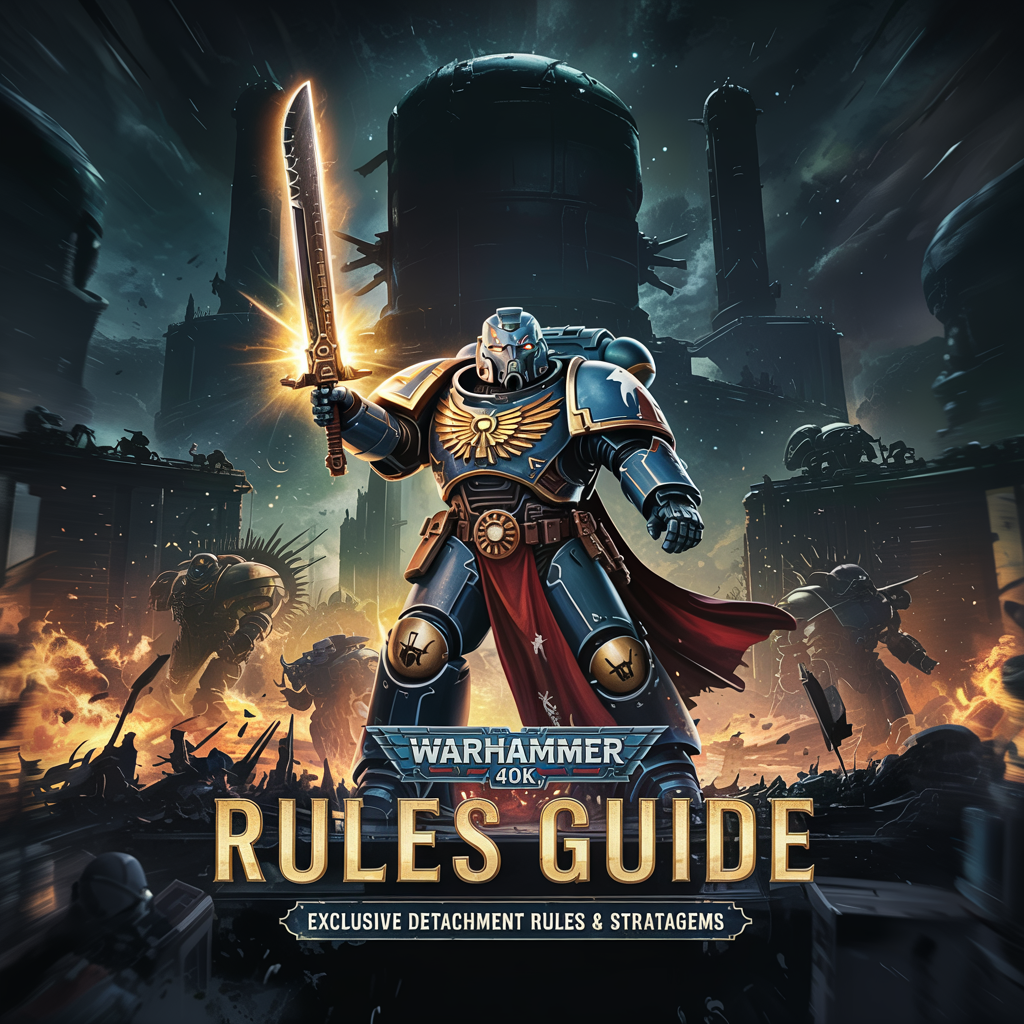The miniature games company Games Workshop have quite a few different game systems available at the moment, but most of them are tied to their two main fictional universes: the future dystopia of Warhammer 40.000 (often referred to as 40K) and the high fantasy universe of Warhammer Age of Sigmar (often referred to as AoS). Both universes also have their own tabletop game, where armies of miniatures clash as players roll dice to see who wins the day.
To an outsider, and even to people who are familiar with the settings, the two games can seem very different at first, but as you learn the rules and lore of the games, you discover so many similarities that it can be confusing to figure out what game you like best, or what their actual key differences are.
In this article, we are comparing Warhammer 40.000 vs Age of Sigmar. We look at the two franchises in key areas such as their history, game rules, different factions and accessibility.
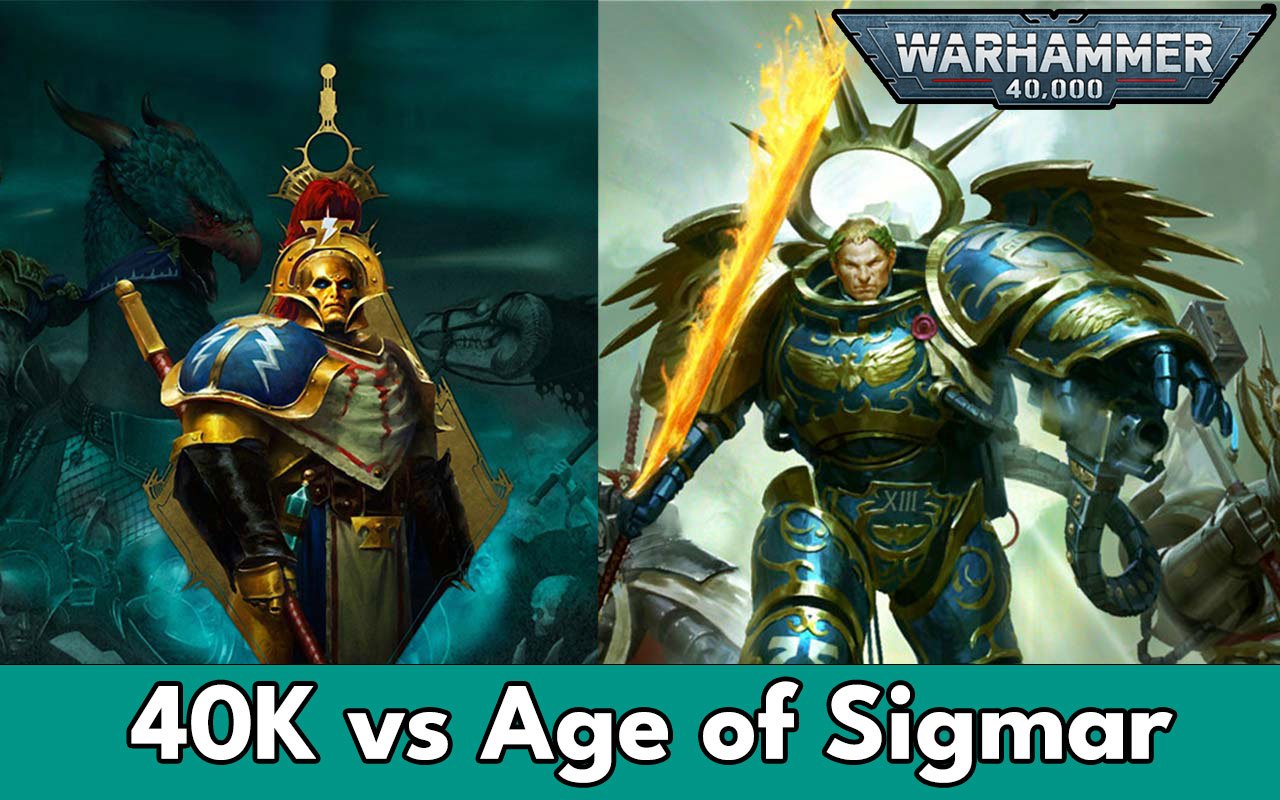
Affiliate Link Disclosure
Age of Miniatures is reader-supported. When you buy through links on our site, we may earn an affiliate commission. Learn more about that here.
History, lore and background of Warhammer 40.000 vs Age of Sigmar
Before we go into the lore of each universe, it’s important to just briefly outline the history of the two game systems.
Warhammer 40k is currently the oldest of the two gaming systems, since its first edition was released in 1987, which means that its rules have been through a ton of iterations, and writers and artists have been building its fictional universe for more than thirty years.
Warhammer Age of Sigmar is much younger: It’s only been around since 2015, and in many ways, its still a work in progress, with new factions being added all the time, and while it does have a lot of background story available already, many parts of its universe are still completely up to the players’ imaginations.
But: AoS succeeded the older fantasy game Warhammer Fantasy Battles, which was created before Warhammer 40K, and its in-lore history is in many ways tied to that game, so you could also argue that AoS is the older game, at least when it comes to its lore.
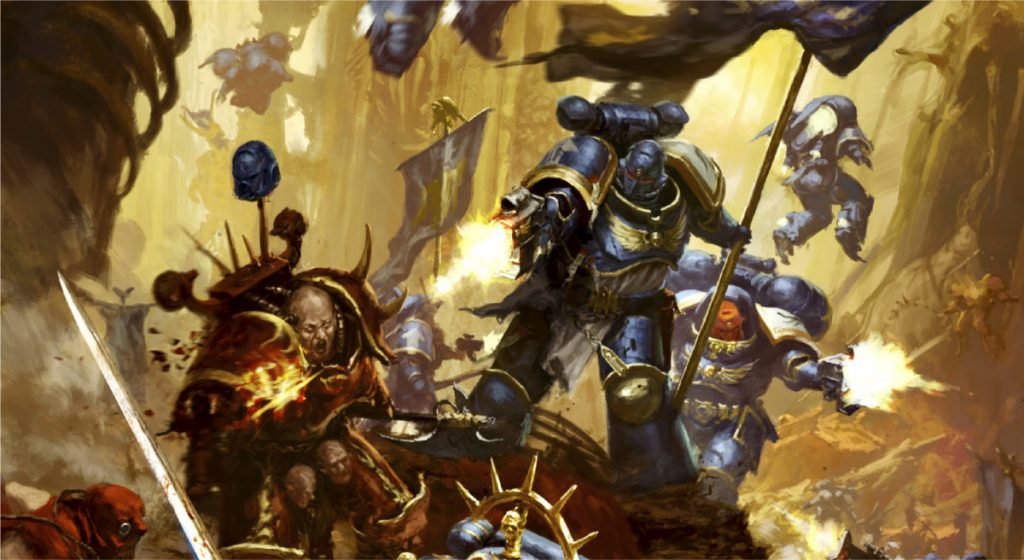
The Lore of Warhammer 40k
The background history in Warhammer 40,000 goes something like this: In the far future, humankind has colonised countless planets across the galaxy, but we’re very far from a techno-utopian Star Trek scenario or the heroic space fantasy of Star Wars: Things are pretty messed up. Technological progress was largely abandoned after a devastating war against robots and AI, and centuries of galactic civil war ended only when the Emperor of Mankind and his genetically modified supersoldiers united the galaxy under his banner.
Unfortunately, humankind’s troubles were far from over: The Emperor created the Primarchs, his genetically engineered “sons”, to help him rule the galaxy, but the forces of Chaos, mighty daemonic powers that feed off human emotions and desires, first kidnapped them and spread them across the galaxy, and then corrupted some of them after they had been recovered. This led to a galactic civil war between the followers of the Primarch Horus and the Emperor, which ended with the death of Horus and the Emperor being mortally wounded.
The Emperor survived, but only as a barely living corpse enshrined in medical equipment who could no longer speak or move, but could still project his psychic powers into the galaxy. The followers of Horus and his allied Primarchs fled into Chaos realm of the Eye of Terror with all their Space Marine forces (the supersoldiers that were given to each Primarch), while the loyalist Space Marines tried to keep the human Imperium together.
Humankind was divided and weakened after this great war, and were at a disadvantage in dealing with all the other problems of being a galactic empire: Strange alien species such as the rampaging Orks or the ancient Aeldari were also attacking human planets, taking advantage of a weakened Imperium.
The 40K game takes place around 10,000 years after all of that went down, and things have gotten even worse. A great rift has appeared in the middle of the galaxy, splitting the Imperium in half, Chaos forces are everywhere, inhuman Necrons and Tyranids are swarming across the galaxy, the advanced T’au Empire is trying to stake its claim as another empire fighting for the Greater Good, and humans with uncontrollable psychic powers are born in ever greater numbers.
One of the loyalist Primarchs, Roboute Guilliman, has returned from 10,000 years of stasis slumber to lead the Imperium in a final attempt to save the Imperium from obliteration with new technologies and improved Space Marines, but the forces of Chaos, as well as all the other alien pretenders to the galactic throne, are moving as well. So, basically, everything and everyone across the galaxy is at war.
Warhammer 40k Lore is amazing, and you can read more right here.
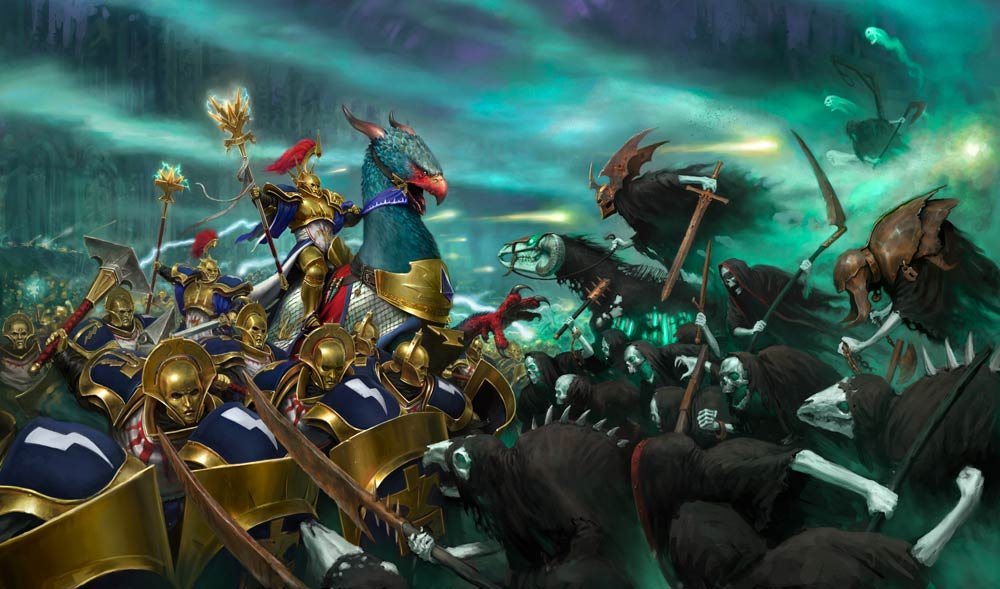
The Lore for Warhammer: Age of Sigmar
If the 40k universe is about keeping the victory of the forces of Chaos from happening, Age of Sigmar is more or less takes the opposite approach: It all begins with an apocalypse.
The World-that-Was, an old world where a human Empire (as well as the dwarfs, elves and so on) lost the war against their version of the followers of the same Chaos gods that besieged the Imperium in 40k, was completely destroyed, but the Winds of Magic from that world created new Realms in the void. Many of the gods of the Old World, including the human hero Sigmar who had now become fully divine, had survived to different degrees, and the new Realms were populated in an Age of Myth where great heroes battled mythical monsters and great empires prospered.
In time, Chaos seeped back into the world, as mortal desires and ambitions made the Realms vulnerable to daemonic incursion. Soon, the Age of Myth was over, and the Age of Chaos began. Sigmar had to retreat to his heavenly realm of Azyr as Chaos forces swarmed the Realms and took over almost everything under the leadership of Archaon the Everchosen, another survivor of the World-that-Was.
The Age of Sigmar game begins the day the absolute rule of Chaos over the Mortal Realms was broken: Sigmar had saved the dying souls of heroes across the Mortal Realms and reforged them into his own near-immortal super soldiers (this sounds familiar!), the Stormcast Eternals, who were sent on bolts of lightning to start reconquering the Realms. At the point of writing this article, the Stormcast Eternals and their aelf, human, duardin (dwarf) and seraphon (lizardmen) allies have fought to take back the world from Chaos for centuries, and while many footholds have been established, most of the Realms are still ruled by Chaos.
Order and Chaos aren’t the only players on the AOS scene, however: Nagash, the Lord of Undeath, has his own plans to fill the Realms with his undead minions, and he has been a greater danger to both Order and Chaos than they are to each other for most of the recent edition of the game. The wild forces of Destruction, such as the Orruks, Gloomspite Gitz and Ogor Mawtribes are on their own quests for good fights and good food, and even among the forces of Order, there are countless animosities and power struggles.
If you are interested in more Age of Sigmar lore, we got you covered in this article here.
Key concepts in both the 40k and Age of Sigmar settings
So, where 40K is about a great Imperium of Order losing its grip, AoS is about Order and other powers trying to take power back from the forces of Chaos.
Apart from that, there are many, many similarities between the game universes, the main ones being:
- Chaos: Both universes have the Forces of Chaos as the main antagonists of civilization, and they are also portrayed in mostly the same way: The gods shared by both universes are Nurgle, the God of Decay, Tzeentch, the God of Change and Magic, Khorne, the God of Rage, and Tzeentch, the God of Excess. In AoS, there is also the Horned Rat, the Chaos God of the Skaven rat-men. In both universes, these Chaos Gods fight amongst themselves as well as against other forces.
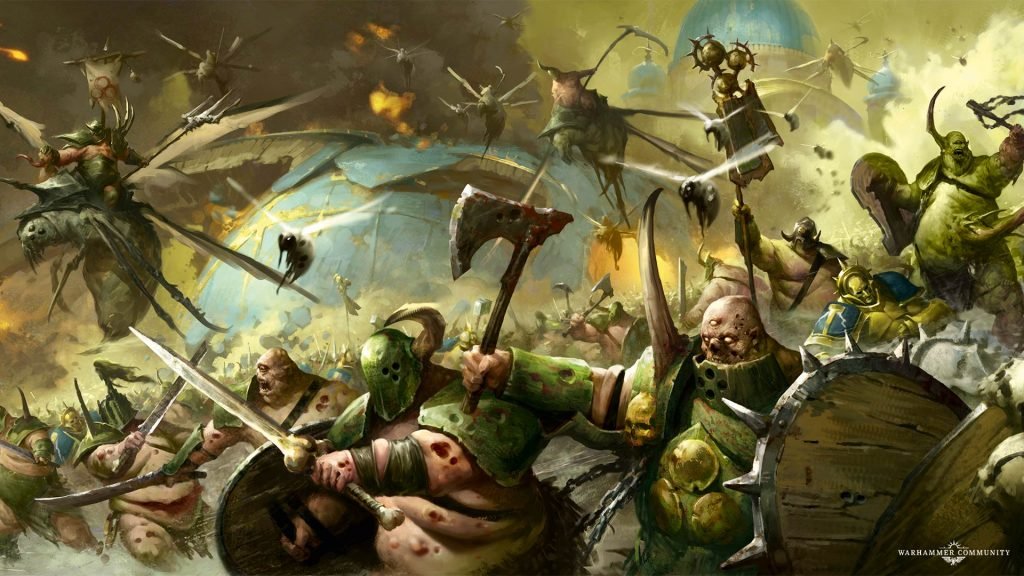
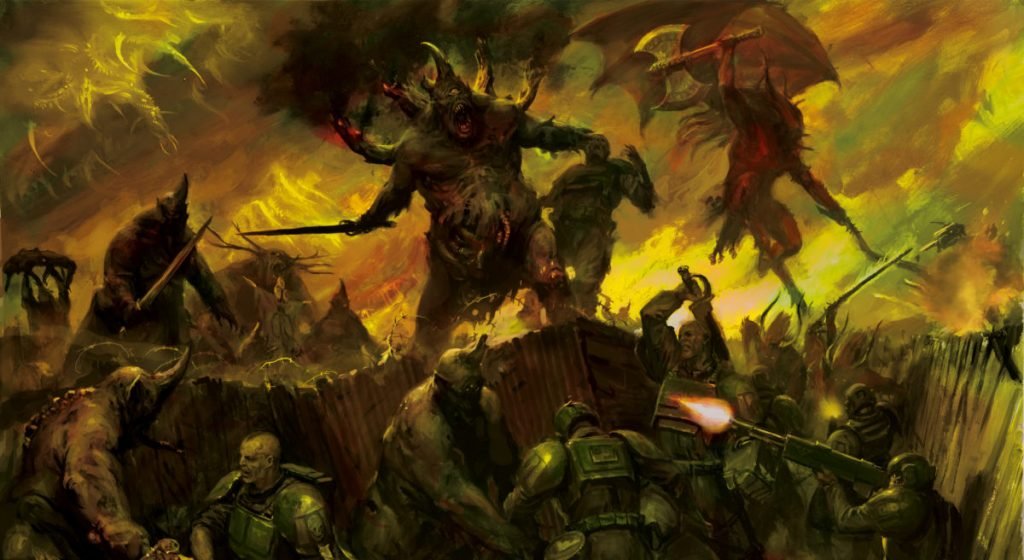
- Fantasy “races”: Both universes have versions of classic Tolkienesque fantasy species such as elves, dwarves, and orcs: In 40K they have just been changed into futuristic space versions of themselves, so dwarves are now evolved humans called Squats, orcs are Orks who have an empire of their own without a dark overlord, and elves are the ancient Aeldari who are just as nostalgic and in decline as the elves of Tolkien’s works. In Age of Sigmar, most of those species are there in their fantasy forms, but redesigned to distinguish themselves from fantasy cliches: Dwarves are now duardin, and some of them are now steampunk privateers in flying ships, while others are gold-seeking mercenaries. Elves are now aelves who exist in a myriad of forms, from the aquatic Idoneth to the murder-worshipping Witch Aelves, and orcs are Orruks who hunt beasts to gain power or fight in heavy armour as the Ironjawz. 40K even has its own versions of the Undead in the shape of the metallic Necrons who look just like metallic skeleton warriors.

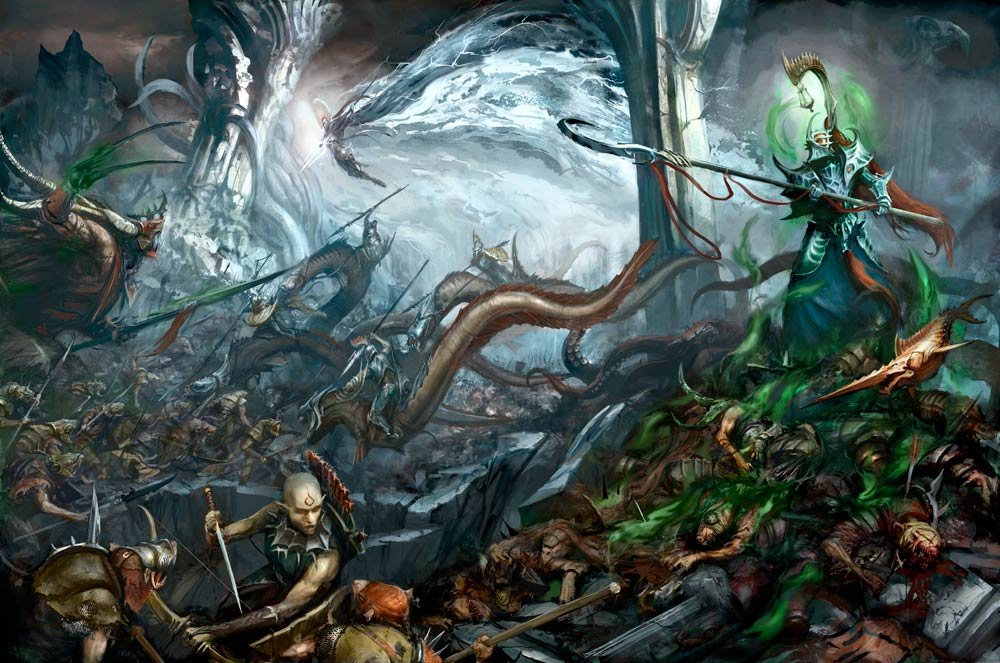
- Monastic Warrior Brotherhoods: Both universes have protagonists who belong to monastic orders of super-powered warriors. in 40K, they’re the Space Marines: legions of supersoldiers who serve the Emperor, but with great differences between the cultures and strategies of each Chapter. In AOS, they’re the Stormcast Eternals who serve Sigmar in the reconquest of the Mortal Realms, but with great differences between the cultures and strategies of each Stormhost. They’re not exactly the same, though, as the Stormcast Eternals have their own distinct story of being dead heroes resurrected, dying and being resurrected again constantly, until they can barely remember what being human is like, while the Space Marines are mortal, but can live for centuries if they survive the wars they wage. The Space Marines are also exclusively male and are recruited at a young age, while Stormcast Eternals have lived full lives before being reforged, and aren’t exclusively male.

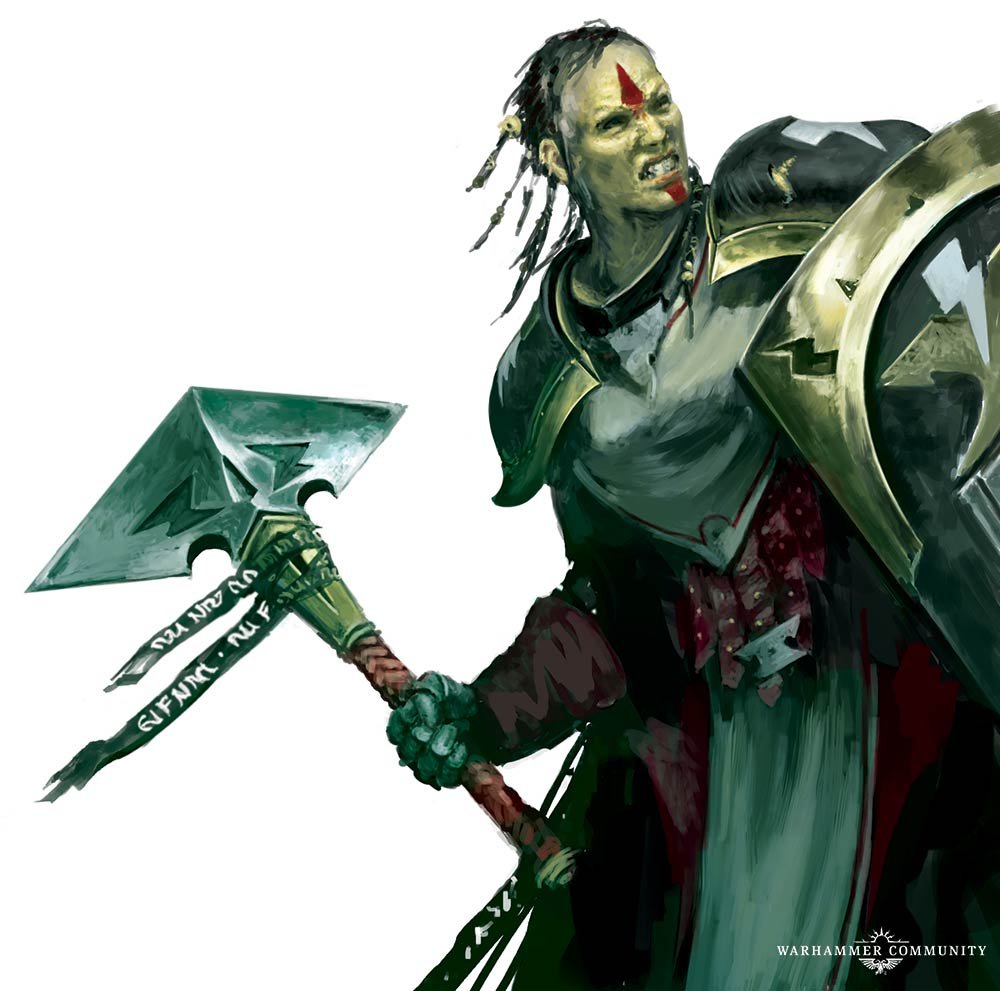
- Magic: In 40K, magic is there in the form of psychic powers and the psykers who are able to use them. All psychic powers draw their power from the chaotic Warp, so they’re very dangerous to use, and may backfire on their wielders. The unsanctioned use of psychic powers is forbidden in the Imperium, and psykers are hunted down. In AoS, magic is literally everywhere: Each Realm is made up of a particular form of magic (Life, Death, Light, Metal and so on), and the world is a wild an unpredictable place where supernatural stuff happens all the time. Every faction uses magic: Even the technological Kharadron Overlords have figured out how to steal spells from other factions and bottle them, and if an army isn’t fielding wizards, it’s probably fielding priests that can pray for magical powers from their gods.
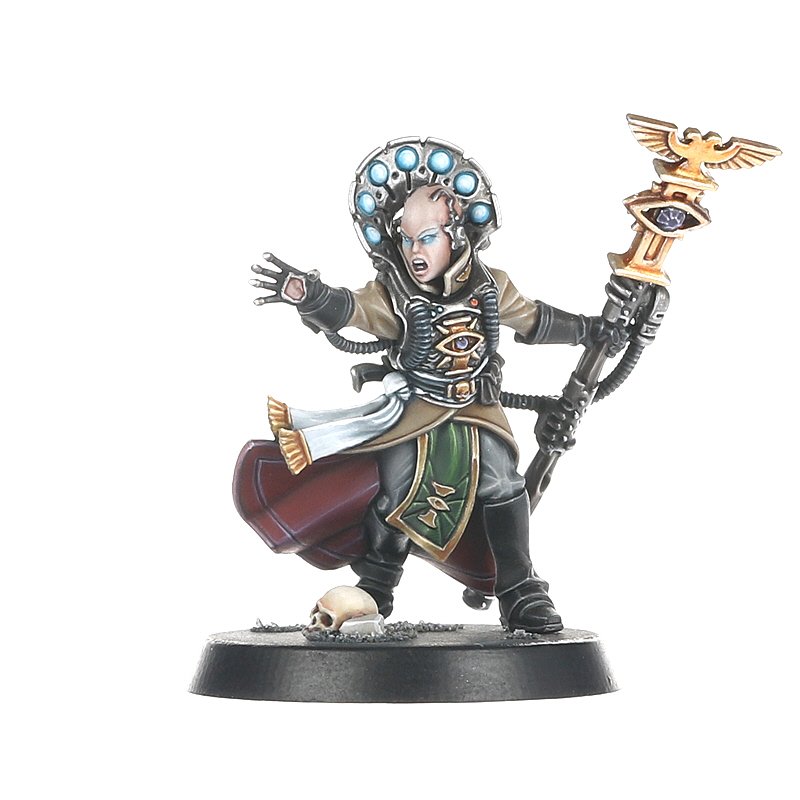
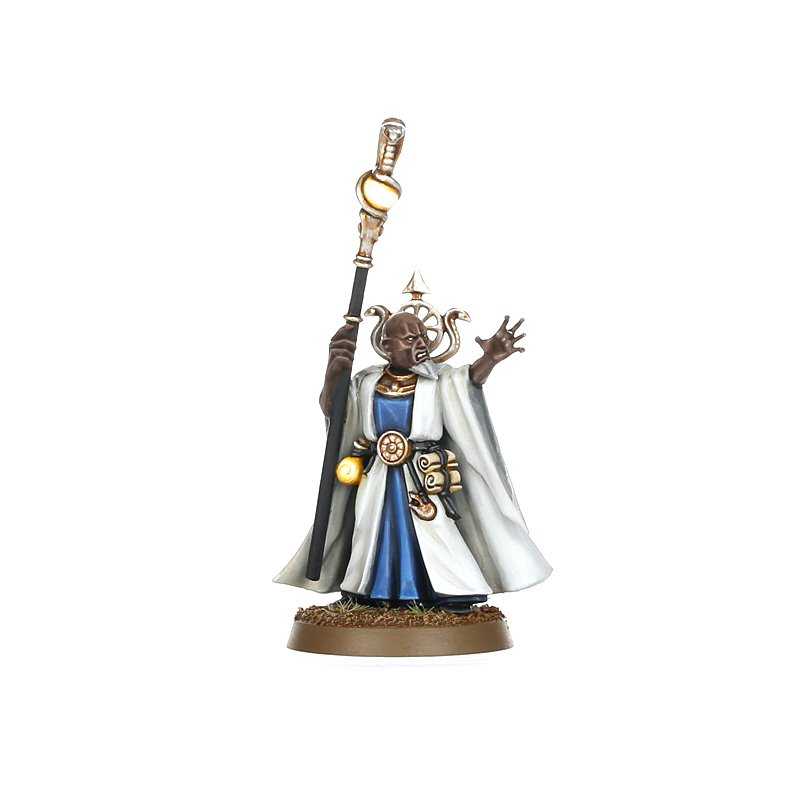
- Technology: In 40K, much of the technology is advanced compared to our present, but innovation and progress is something that’s generally reserved for the T’au Empire and radical visionaries in the Imperium. Most of the time, nobody remembers why anything works the way it does, and superstition is abundant, as priests chant prayers to fix broken tank engines and bless weapons with attached strips of holy Scripture. In AoS, technology plays a very big role for a fantasy game: Sigmar’s reconquest of the Realms is powered by technological innovation to a very large degree, and the Stormcast Eternals carry various magical “guns”. The Free Cities are also often very industrial and use mechanical devices for many purposes, and the duardin Kharadron Overlords have so much technological weaponry that they can go toe to toe with wizards and Chaos Daemons and emerge victorious.
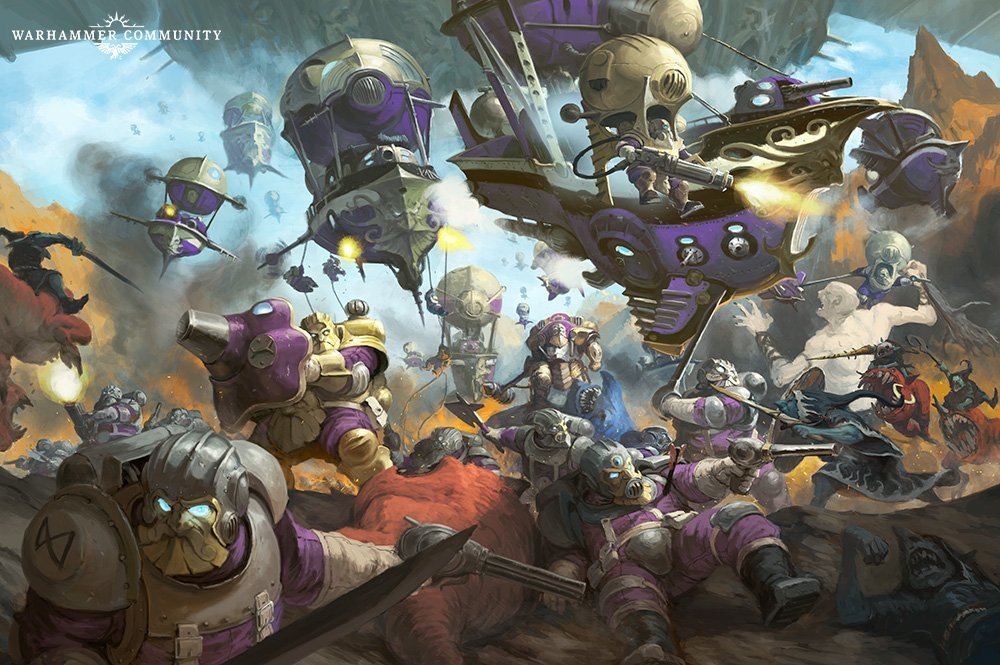

Rule differences between Warhammer 40.000 vs Age of Sigmar
The rules for how to play a game of AoS or 40K is probably where the two systems are the most alike. In fact, they play so similarly that it can be difficult to spot the differences for a beginner until models actually start fighting each other. Also, if you play both you it is very common to forget what rules fit to what system. We have a detailed walkthrough of the similarities and differences in each phase of a turn for both games in our Warhammer 40,000 Recruit Edition Review, but this section highlights the most important points.
Turns, Rounds and Phases
Both games work in turns, rounds and phases. Each round consists of a turn for each player, and each turn consists of a number of phases for each game:
40K:
- Command Phase: Command points are gained and some effects are resolved
- Movement Phase: Units move
- Psychic Phase: Psychic powers are used and the opponent can attempt to stop them
- Shooting Phase: Units with ranged weapons shoot
- Charge Phase: Units charge into combat
- Fight Phase: Close combat is resolved. Units that charged fight first, and then players alternate to have all units in melee range fight.
- Morale Phase: Dice are rolled to check if any models flee.
AOS
- Hero Phase: Some command abilities are used, and spells are cast and countered
- Movement Phase: Units move
- Shooting phase: Units with ranged weapons shoot
- Charge Phase: Units charge into combat
- Combat Phase: Units in melee range alternate attacking each other
- Battleshock Phase: Dice are rolled to check if any models flee.
As you can see, the process of going through a turn is very similar in both games, with small variations. A big difference is that in 40k, players roll off to see who gets the first turn (if they want to take it), and then alternate taking turns. In AOS, players roll off to see who gets the first turn before every round of the game, which means there’s an opportunity to take two turns in a row if you were last in the previous round. This is hotly debated in the AOS community because some players think this means the player who gets a double turn has too good a shot at winning the game, but it seems to be there to stay.
Movement
Movement in the two games is very similar, but in 40K, models in a unit have to end their movement within 2 inches of each other, as opposed to 1 inch in AOS, which actually means quite a bit for how your armies are set up!
Hitting, Wounding and Taking Damage
Here’s one of the really major differences between the two game systems: In AOS, each weapon on a warscroll has a fixed chance to hit and to wound, for example 3+ to hit and 4+ to wound. In 40K, these two stats are ruled by separate systems. The chance to hit is not tied to the weapon, but to the model, and is represented by a Weapon skill (for melee combat) and a Ballistic skill (for ranged combat). The chance to wound is much more complex, since you figure this out by comparing the Strength of the attacker (for melee) weapon modifiers or the Strength of the weapon (for ranged combat) to the Toughness of the target. If your Strength is higher than the target’s Toughness, it’s easier to wound them, and if it’s lower, you have to roll much higher to wound.
On top of this, weapons in 40K have types that can determine how they work in the game, such as Rapid Fire weapons which can double their attacks if they are within half their maximum range of the target. Also, weapon damage in 40K doesn’t carry over, which means that if your weapon has a damage characteristic of 2 and kills a 1 wound enemy model, the surplus 1 point of damage is just lost. In AOS, a damage total is just applied to the enemy unit, so a damage 2 weapon would be able to kill 2 1 wound models.
In short, 40K has a greater level of simulation than AOS when it comes to combat: it has different weapon types, multi-damage weapons are actually more valuable against larger targets than they are in AOS, and melee weapons take the strength of the wielder into account. This makes the game more complex (and slower!), but also adds a tactical layer AOS is missing in this one area of the game.
Unit Roles
In AoS, there are the following unit roles for list-building (there are plenty of other keywords!):
- Leaders – these are your heroes and single characters
- Battlelines – these are your standard troops, and you usually need a few of them to build a list
- Artillery – these are you artillery units
- Behemoths – these are very large models that you can only field a few of
- Other Units – this is everything else
In 40K, there are the following unit roles for list-building (but there are of course many other keywords):
- HQ – these are your heroes and leaders
- Troops – these are your standard troops
- Elites – these are elite troops, but can also be single models that don’t function as leaders
- Fast Attack – these are fast-moving troops
- Flyer – These are flying units (which have special rules in the game)
- Heavy Support – these are heavy ranged units
- Dedicated Transport – these are unit transports
- Fortification – these are stationary, building-type models
- Lord of War – these are super-warriors such as Primarchs, and comparable to the power levels of gods in AOS
Command Points
Both games have command points which can be used to activate abilities, but they also interact with the games in other ways when it comes to list-building, as we’ll go through below. In AOS, these abilities are tied to Leaders, whereas the Stratagems of 40K are a system of their own and not specifically tied to characters.
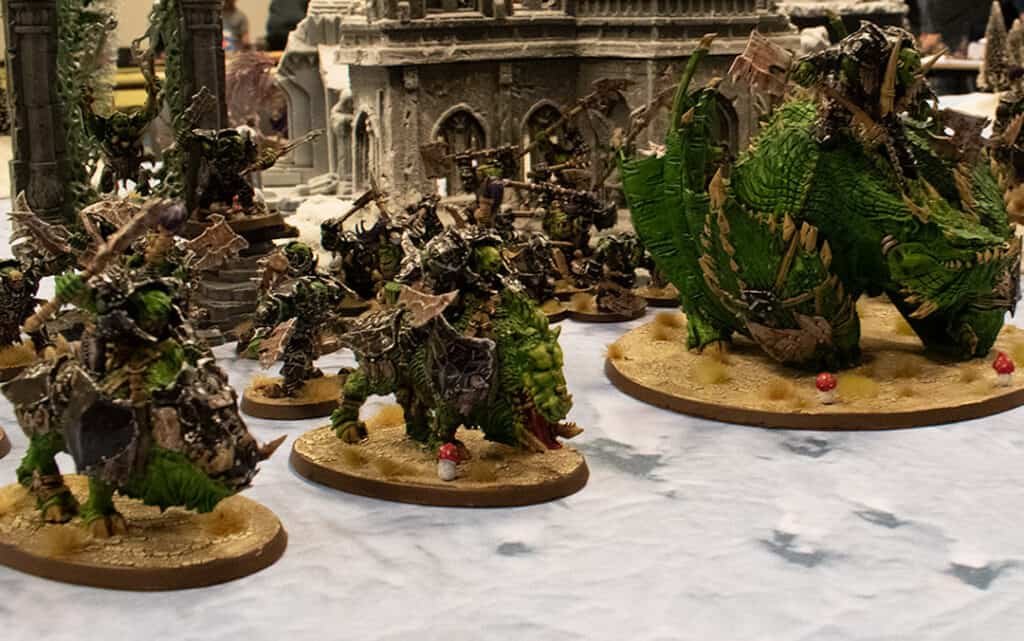
Building Army Lists in 40k vs Age of Sigmar
In Matched Play (the format for competitive games), both games have a points cost for each unit and and a points limit for what you can field in a game. Apart from that, the rules for building an army list in the two games are pretty different.
in 40K, the points level you choose to play at awards you with some command points, which you can then use to buy detachments. Detachments are groups of units where you are required to bring a specific number of units with a specific unit role, but also allowed to bring specific other unit types. If you can manage to fit all of your army into detachments, you gain various bonuses. Special weapons for units might have their own additional points cost.
in AOS, a specific level of points requires you to take a specific number of Leaders and Battleline units, and then sets limits for which other unit types you can bring. You can also buy battalions for points. A battalion is a specific group of units that grant you various bonuses, such as an extra command point and the option to take an extra artefact for one of your Leaders.
It’s definitely more straightforward to build armies in AOS, but the detachments of 40K also guides you in building armies that are good at specific things, which is a different, but good way of guiding beginners in building army lists. You can read more about army building in AOS and 40K in our beginner’s guides for the two games.
Campaigns
in AOS, the campaign system is called Path to Glory, and it lets you slowly build an army through playing games and earning points that you can then use to add more units and give them bonuses. This is a cool system, but the recent edition of 40K has introduced a Crusade system that’s a big evolution of the Path to Glory system with dedicated books, bonuses and much more ways to develop your characters and units. Hopefully a new edition of AOS will adapt something like this, but for now, it seems like 40K is in the lead when it comes to campaign systems.
Factions in Warhammer 40.000 vs Age of Sigmar
40K has around 30 armies available (it depends on how you count Space Marines chapters), divided into three overall categories: Armies of the Imperium, Armies of Chaos and Xenos Armies. You can read about all of them on our 40k army overview page.
AoS has around 24 armies available (but the number is growing all the time) divided into 4 Grand Alliances: Order, Chaos, Death and Destruction. You can read about all of them in our AOS army overview guide and 40k army overview guide.
What do you need to get started in Warhammer 40.000 vs Age of Sigmar
For both games, you need basically the same things to get started, but there are a few key differences.
If you want to delve deeper into any of the two games, we have a Beginner’s guide for Age of Sigmar here and a Beginner’s guide for Warhammer 40k here.
Miniatures

First of all, you will need some miniatures to play the game. Games Workshop makes some of the most highly detailed plastic miniatures in the business, and they’re pretty easy to assemble and paint. With very few exceptions, every single unit you can field in both games have a corresponding box of miniatures you can buy from Games Workshop. They are also sold by a ton of different hobby stores, both physically and online.
Exactly which miniatures you want to buy depends entirely on what army you’re playing, of course, and which list you’re building.
Starter sets and the various big boxes are often the only way to save some money when buying models brand new.
Dice
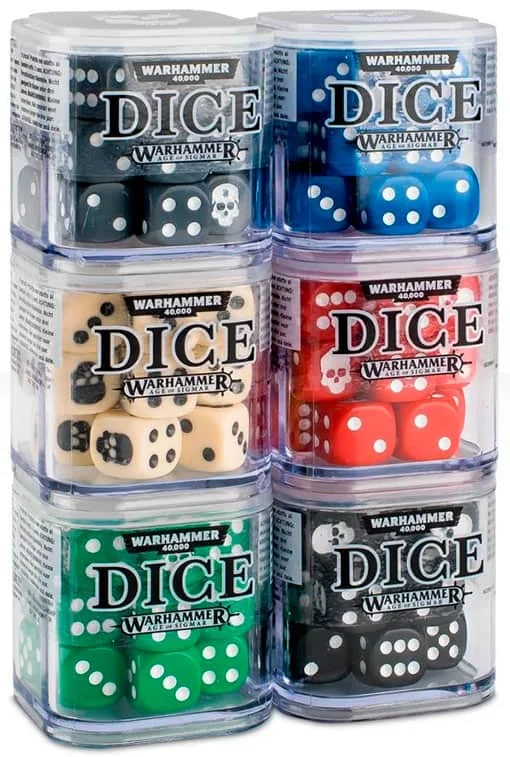
Both games use only six-sided dice, and you can use whatever versions of these you want. Many factions have faction-specific dice designed with their iconography, but that doesn’t influence the game at all, so just use any dice you have. It’s a good idea to have many of them (you can often find a use for more than 30 of them), and to have dice in different colours, so you can roll different attacks with the same chance to hit, but with different chances to wound, at the same time in a hit roll.
So buy in bulk and get loads of dice!
Tape Measure

Both games measure distance in inches, so any tape measure that measures inches is fine.
Scenery
Games Workshop has a lot of plastic scenery available for both 40k and AOS, with rules for using them in the game. Some factions in both games even have special scenery available to them that give bonuses to your army. You can, however, use third party scenery, cardboard boxes and LEGO bricks if you want to.
The GW plastic terrain looks good, but it can be very expensive to fill a board with only GW terrain. Looking at cheaper terrain options can never hurt.

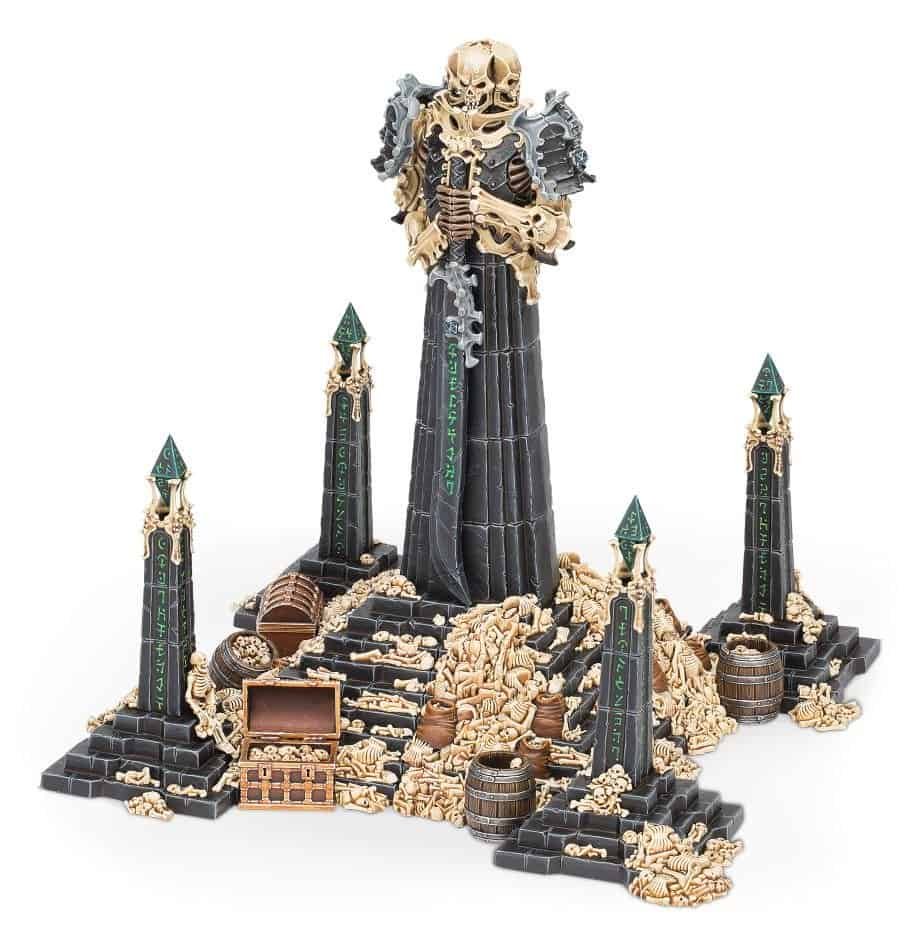
Rules
Core Rules
The basic rules are available to download for free for both 40K and AOS – but they’re only the tip of the iceberg. You can absolutely play the games with these rules and some unit rules, but sooner or later you’ll need a rulebook.
For 40K, what you need is the Warhammer 40,000 Core Rulebook, which has all the rules you’ll need, as well as a very detailed introduction to the game’s universe and lore. Be aware that this book is only available in a physical format (so not as an e-book, which seems to be the case for everything released for Warhammer 40,000 since the release of its 9th edition in 2020) and that, for some unfathomable reason, it’s not included in any of the starter sets for the game.

If you want to play with the most up to date rules, you’ll also need the latest version of the Chapter Approved Grand Tournament rules, which contains updates to the rules as well as points updates (now in a separate book called the Munitorium Field Manual).

For AOS, you need the Age of Sigmar Core Book, which also contains complete rules and lore for the game. It’s available in both physical and digital form (like all AOS publications)

You’ll also want to buy the General’s Handbook 2020 (or the one for whatever year you’re reading this article), which contains updates to the rules as well as the battleplans and rules that will be used for tournaments and competitive play in that year.
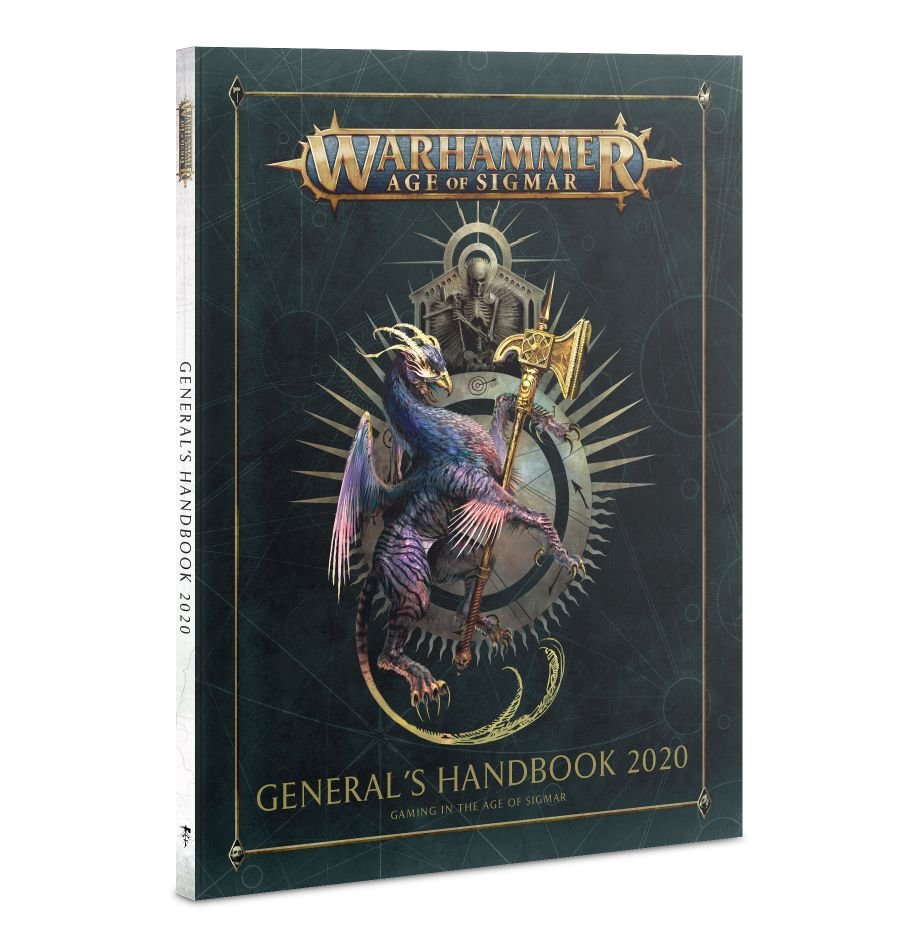
Unit rules
When it comes to rules for each unit you want to field, the two games are pretty different.
In 40K, unit rules are printed on datasheets, which are generally found in codexes. A codex is the book each army in the game has for all its rules and lore. So if you want to field a unit with its full rules, you need the codex for the army it’s from. When you buy a box of miniatures for the game, that box will also contain a basic datasheet for the units you can build with that box, but it might not include all options available to that unit.

In AOS, unit rules are printed on warscrolls, which are freely available to download from the Games Workshop webstore under the page for each box of miniatures available in the game. A unit will generally not have options available to it that aren’t printed on its downloadable warscroll. This means that you can play the game with just those rules, miniatures and the warscrolls in the miniature boxes, but in most cases, you’ll also want the battletome for the army you’re playing. A battletome contains all the lore and special rules for an army you can field in the game, as well as the warscrolls for units from that army.

Apps
Both AOS and 40K has apps available now for iOS and Android. The utility of these apps are pretty different though.
Warhammer 40,000: The App is a very good army builder that helps you keep track of all the different choices you have when building a 40K army. It does require a paid subscription though, but it’s around the price of a bottle of soda, so that’s negligible. The main problem with the 40K app is how it is tied to physical books. You can only access the full rules for units for which you have an actual physical codex, since you need a code that’s printed in the back of each physical book. This means that even though you have the paid subscription, you still need to go out and buy physical books to take advantage of the functions in the app.
For now, there are still many armies that haven’t had a new codex released for them for the 9th edition of the game, and as long as an army doesn’t have a codex, you can use all its rules straight from the app! Check our 40k faction overview to see which armies have a codex.
The digital publishing strategy for 40K is a big drawback if you want to start playing the game, especially since new codexes are often sold out, and then there’s just no way of getting the rules for your army.
Conversely, the Warhammer Age of Sigmar App has all the warscrolls for all units in the game available, even without a subscription, while the option to build army lists costs a small monthly fee. You still need battletomes to access special army rules such as allegiance abilities and subfactions, but the battletomes are all available to buy in the app, in addition to General’s Handbook and other rules publications.
Nobody really knows why the two apps and their associated digital sales strategies are so different, but what they have in common is quite a few bugs, so if you run into the rules for a unit being wrong or a specific option missing, don’t be too surprised. All that being said, both apps are very useful tools for beginners and veterans alike.
Pros and Cons for Warhammer 40.000 vs Age of Sigmar
40K
Pros:
+ Huge backstory that’s been developed for decades
+ …and so has its rules
+ a higher level of complexity and simulation in combat and list-building than AOS
+ has a huge community, so it’s easy to find someone to play with
– slower than AOS
– much of the game is very tied to tradition, so new armies don’t appear as often
– lack of digital availability of rulebooks can make the game hard to get started with
AOS:
+ New, fresh world where everything is possible
+ accessible rules make getting started with the game pretty easy
+ new armies show up all the time
+ the “everything is on the warscroll” approach means there is room for more imaginative, wild unit abilities
+ faster than 40K (no Strength/Toughness to figure out, for example)
– is still growing as a game, so it’s hard to figure out what’s good or bad in the game because the next battletome might turn everything on its head
– advanced players might miss the levels of weapons and combat simulation from 40K in AOS

